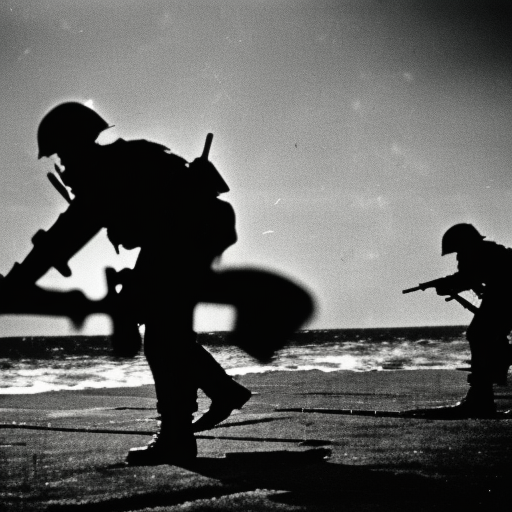Battle of Lowestoft: A Decisive Naval Clash in the First Anglo-Dutch War
The Battle of Lowestoft, fought on June 13, 1665, was a significant naval engagement between the English and Dutch fleets during the First Anglo-Dutch War. It was the largest naval battle of the 17th century and a crucial moment in the conflict between the two maritime powers.
Background:
The First Anglo-Dutch War began in 1652 as a result of growing tensions between England and the Dutch Republic over trade and maritime dominance. Both nations sought to control lucrative trade routes and expand their overseas empires. The war was characterized by intense naval warfare and numerous clashes at sea.
The English Fleet:
Under the command of Admiral James, Duke of York (later King James II), the English fleet consisted of around 109 ships, including powerful warships such as the Royal Charles and the Sovereign of the Seas. The fleet was well-equipped and manned by experienced sailors.
The Dutch Fleet:
The Dutch fleet, led by Lieutenant-Admiral Jacob van Wassenaer Obdam, comprised approximately 103 ships. The Dutch navy was renowned for its skilled sailors and innovative ship designs, particularly their fast and maneuverable warships known as “fluyts.”
The Battle:
The battle began when the English fleet, sailing from the Thames estuary, encountered the Dutch fleet near the Suffolk coast. The Dutch, having spotted the English ships, formed a line of battle to engage their opponents. The English, however, divided their fleet into three squadrons to attack the Dutch from different angles.
The battle commenced with a fierce exchange of cannon fire. The English, with their superior firepower, initially gained the upper hand, causing significant damage to several Dutch ships. However, the Dutch fleet’s maneuverability allowed them to evade direct hits and retaliate with accurate salvos.
As the battle progressed, the English fleet faced challenges due to poor coordination and communication between the squadrons. This allowed the Dutch to exploit gaps in the English line and launch successful attacks. The Dutch flagship, Eendracht, engaged in a close-quarters battle with the English Royal Charles, resulting in heavy casualties on both sides.
Despite the English fleet’s initial advantage, the Dutch managed to inflict severe damage on several English ships, including the Royal James, which exploded and sank. The battle raged for several hours, with both sides fiercely contesting control of the sea.
The Aftermath:
By the end of the battle, the English fleet had suffered significant losses, including the capture or destruction of several ships. The Dutch, although also sustaining heavy casualties, emerged as the tactical victors. However, due to a lack of reinforcements and concerns about the English fleet’s potential to regroup, the Dutch did not pursue their advantage.
The Battle of Lowestoft demonstrated the resilience and effectiveness of the Dutch navy against the powerful English fleet. It also highlighted the importance of naval tactics and coordination in determining the outcome of large-scale engagements.
Significance:
The Battle of Lowestoft had far-reaching consequences for the First Anglo-Dutch War. It boosted Dutch morale and demonstrated their ability to challenge English naval supremacy. The battle also highlighted the need for the English navy to address issues of coordination and communication to improve their chances in future conflicts.
Overall, the Battle of Lowestoft was a pivotal moment in the First Anglo-Dutch War. It showcased the strength and resilience of both naval forces, while also revealing the importance of strategy and coordination in large-scale naval engagements. The battle set the stage for further clashes between the English and Dutch fleets, shaping the course of the war and the balance of power in Europe.












